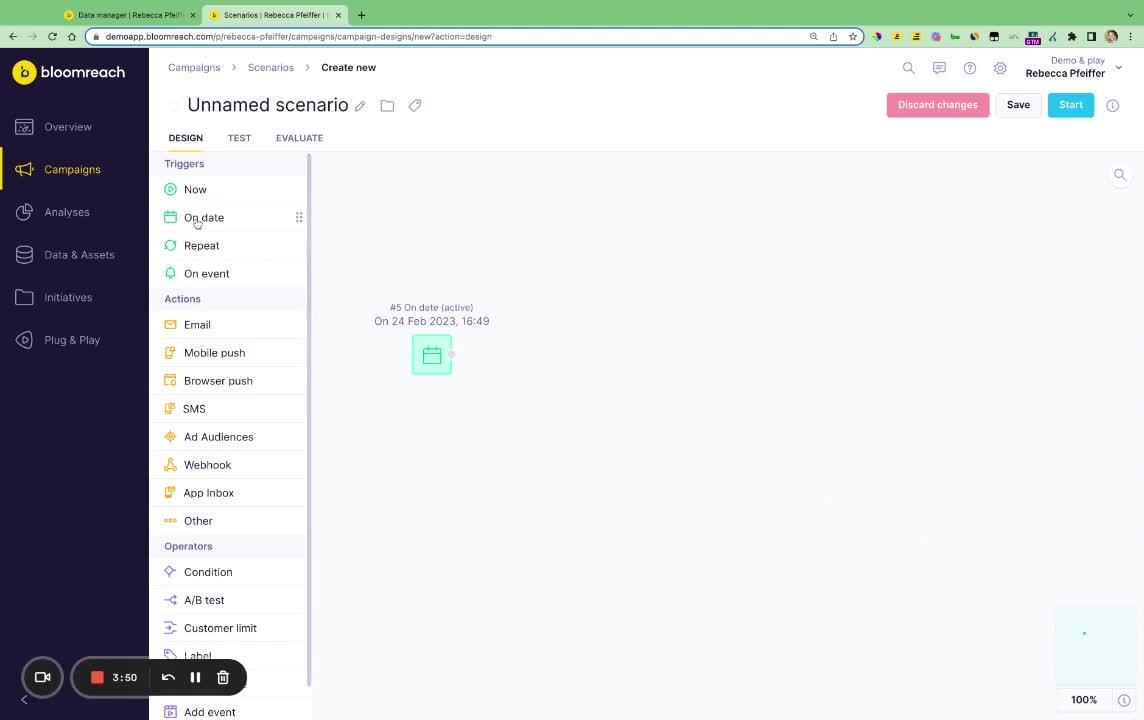Through the power of the single customer view that consolidates
data from across all of your different sources.
You have the ability in bloom reach to take those raw
data points and input them into calculated fields
to pull away new insights. So
for example, let's say that I want to target customers
who have purchased over $1000 in shoes
with an exclusive online pres sale
to the newest shoe collection.
We have a feature in Bloom reach called aggregates.
That's gonna help you do just that.
So I'll come in here and I will select the
operator that I want for this specific use
case right now, I want some so
I can add up the prices.
What am I gonna add up? Purchase
events
and then from that purchase event, I wanna add
up the price,
but the last step here is to narrow this down by shoes.
So I'm gonna say where the category
here s
shoes.
All right. Now, once that is all set, I can head
into our scenario tool, which will allow
us to set up this customer journey
and I will set this up to be triggered on
a specific date. For that pres sale. Let's
say the presales next. Tuesday,
the 28th,
done. All right. Now, I'm gonna go ahead
and pull in this condition module next.
So I can use that aggregate that I just
created. So I'll open this up, start
this condition based on a customer attribute.
And I'll open up that dollar
spend on shoes.
And I wanna make sure that this value is greater
than 1000.
I'll go ahead and label this
so spend
greater than one
K on shoes
done. And then the last step here
is to choose the channel in which I want to target
these customers. In this case, maybe I'll
just go with a audiences. I'll drag
this in where I want it connect
the modules and I'm good to go.
Now, this only took me about a minute to create
and there was no need for me to do any ad
hoc SQL queries or exports to
Excel to create these calculated fields.
Everything was done
intuitively in the platform.
This is beneficial because it ensures that all
of our communication with our customers has the most
up to date information.
This calculated field that we had created
will update in real time as more and more
data enters the system. Whereas ad hoc
Excel calculations are done
in a one-off manner, so they may take
time for you to do on your own outside of
the platform. And then by the time that the data
is reimported for audience building. It's
no longer in absolute real time.



